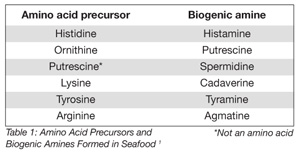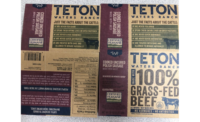Seafood commodities, wild and farmed, produced from bivalve mollusks, crustaceans, cephalopods or fin fish, represent some of the most important protein sources in human nutrition, having a reputation as healthy and nutritious products.[1] In fact, their contribution to total animal protein intake is significant (~ 18.5%) and is probably higher than indicated by official statistics in view of the under-recorded contributions of small-scale and subsistence fisheries.[2]
Among seafood products, ready-to-eat (RTE) goods have high demand, becoming popular worldwide due to their convenience. However, this need for convenience has led to major challenges in the areas of food preservation, safety and hygiene. Traditionally, RTE products have undergone processing to include one or more pathogen-reduction steps to render the products fit for human consumption without further heating or cooking by the consumer. Nevertheless, consumer patterns are changing rapidly, and the sushi and sashimi trend, particularly among urbanites, involves new eating habits that include the consumption of raw seafood.
Seafood-borne diseases of microbiological origin can be caused by viable organisms and/or by toxins that they produce, which enter the gastrointestinal tract. The risk of disease from these agents varies by pathogen, dose, host and characteristics of the seafood matrix.[3] The extent to which a microbial hazard is likely to be present in seafood and give rise to a public health and safety risk depends on numerous factors, including the biology of the particular seafood species, its growth environment and the specific activities along its production and processing supply chain.[4]
Vibrio species
Consumption of raw bivalves or cooked Crustacea subjected to cross-contamination or time/temperature abuses has been associated with cases of infection due to Vibrio spp., which are ubiquitous in aquatic environments. Most of the species are mesophilic, and their numbers tend to increase during warm seasons (>15 ºC). Seafood-borne diseases are primarily caused by Vibrio parahaemolyticus, V. vulnificus and V. cholerae.[5] V. parahaemolyticus and V. cholerae both cause gastrointestinal disease, while V. vulnificus causes septicemia. These pathogenic Vibrio spp. are abundant in warm seawater environments.[2] Marine Vibrio species are known to attach themselves to the exoskeletons of Crustacea and metabolize them as carbon/energy sources. Vibrio organisms can be found at levels of 102–103 cells/g in shellfish and 104–108 cells/g in the intestines of fish; their presence and numbers are influenced by factors such as temperature, salinity and algal density.[4, 5]
V. cholerae O1 and O139 have been identified as causing outbreaks of cholera, which is an extremely virulent disease, associated with a rapid onset of severe diarrhea that affects both children and adults.[3] Some outbreaks have been associated with consumption of oysters and warm-water shrimp.[4] This illness remains epidemic in many parts of the world.[2] The O1 and O139 serogroups of V. cholerae derive from fecal contamination and may become established as environmental contaminants in waters from which seafood is produced, potentially contaminating products prior to catch. Non-O1/-O139 serotypes are rarely associated with sporadic cases of gastroenteritis.[5] Control of V. cholerae seafood-borne disease is based on thorough cooking, prevention of cross-contamination between raw and cooked products and use of potable water.[2, 4]
V. parahaemolyticus, V. vulnificus, non-O1/-O139 V. cholerae and nontoxigenic V. cholerae O1 are found in estuarine and marine environments, often isolated from live bivalves and Crustacea. V. parahaemolyticus causes gastroenteritis. Symptoms typical of gastroenteritis are less common for V. vulnificus, which can also lead to infection by direct contamination of open wounds during activities such as swimming or shellfish cleaning.[1] Pathogenicity of isolates is associated with their ability to produce a thermostable direct hemolysin (TDH) or a TDH-related hemolysin.[5]
These indigenous pathogens are not efficiently removed by depuration in the case of bivalve mollusks, and levels do not correlate with counts of coliform indicator microorganisms. Therefore, monitoring of harvesting areas may not be adequate to control the food safety risks posed by these pathogens. Rapid chilling of recently harvested bivalves will prevent outgrowth.[1, 4] For Crustacea, industrial cooking significantly reduces the bacterial load. Nevertheless, cross-contamination between raw and cooked Crustacea during processing, transport and storage, especially onboard vessels, is of particular concern, potentially reintroducing environmental microbial hazards. Cooling water and brine/ice used for storage of RTE cooked Crustacea are also recognized as potential sources of recontamination.
Histamine
Some canned and enzyme-ripened products (e.g., anchovy paste and fish sauce) prepared with fish species belonging to certain families, particularly Scombridae (mackerel and tuna), Clupeidae (herring), Engraulidae (anchovies), Coryphaenidae, Pomatomidae and Scombresosidae, may contain high levels of histamine (scombrotoxin) formed through bacterial enzymatic decarboxylation of the amino acid histidine and can be associated with scombroid poisoning or histamine fish poisoning.
 Many seafood spoilage bacteria, including both mesophilic and psychrotolerant species, produce biogenic amines, not only histamine, but also agmatine, cadaverine, putrescine, spermidine, spermine and tyramine, depending on the concentrations of free amino acid substrates, which are strongly fish species-dependent (Table 1).[1] Some members of Enterobacteriaceae (e.g., Morganella morganii, M. psychrotolerans, Raoultella planticola and Enterobacter aerogenes), Vibrionaceae (e.g., Photobacterium phosphoreum and P. damselae) and lactic acid bacteria (e.g., Tetragenococcus myriaticus and Lactobacillus spp.) can contribute to the formation of histamine. Once formed, this biogenic amine is stable to heat, freezing, salt and pressure.[1] Efficient chilling of raw material is essential to delay histamine formation by psychrotolerant bacteria (e.g., M. psychrotolerans and P. phosphoreum) in such RTE fish products.
Many seafood spoilage bacteria, including both mesophilic and psychrotolerant species, produce biogenic amines, not only histamine, but also agmatine, cadaverine, putrescine, spermidine, spermine and tyramine, depending on the concentrations of free amino acid substrates, which are strongly fish species-dependent (Table 1).[1] Some members of Enterobacteriaceae (e.g., Morganella morganii, M. psychrotolerans, Raoultella planticola and Enterobacter aerogenes), Vibrionaceae (e.g., Photobacterium phosphoreum and P. damselae) and lactic acid bacteria (e.g., Tetragenococcus myriaticus and Lactobacillus spp.) can contribute to the formation of histamine. Once formed, this biogenic amine is stable to heat, freezing, salt and pressure.[1] Efficient chilling of raw material is essential to delay histamine formation by psychrotolerant bacteria (e.g., M. psychrotolerans and P. phosphoreum) in such RTE fish products.
There is uncertainty regarding the threshold toxic concentration of histamine, because potentiators of toxicity, such as cadaverine, putrescine and spermine, may vary considerably from one fish to another. However, this type of food poisoning can be considered, in general, slight at 8–40 mg histamine/100-g portion, moderate at levels between 40 and 100 mg histamine/100-g portion and severe at levels greater than 100 mg histamine/100-g portion.[5]
Human Enteric Viruses
Consumption of raw (or insufficiently cooked) contaminated bivalve mollusks is the primary reason for virus-related seafood-borne disease. Bivalves feed by filtering small particles from surrounding water. In this process, bivalves may concentrate and retain human pathogens, including human enteric viruses, from discharges of untreated or poorly treated human waste, direct discharges of industrial wastes and runoff from urban and agricultural areas.[6] Human enteric viruses are species-specific and do not multiply once released into the marine environment, as viruses are obligate intracellular parasites. Their survival and persistence are based on many factors, including temperature, salinity, ultraviolet radiation from sunlight and the presence of organic matter or sediments.
Microbiological monitoring of bivalve production areas by competent regional authorities is usually undertaken as part of a program to classify the areas according to the perceived risk of the presence of pathogenic microorganisms, which is based on the concentrations of fecal indicator bacteria present in the area.[7] However, the elimination rate of viruses by bivalves is slower than for fecal coliforms or Escherichia coli.
The occurrence of noroviruses (NV) and hepatitis A virus (HAV) in naturally contaminated bivalves from polluted harvesting areas, or in bivalves associated with disease outbreaks, has been documented. Bivalves destined for human consumption can be processed by cooking/heating (pasteurization), relaying, depuration, irradiation, ozonation and high hydrostatic pressure to remove or inactivate potential microbiological contaminants.[7] Light cooking does not inactivate NV, and HAV has significant heat stability. Nevertheless, the promotion of harvesting area water quality offers the most sustainable route to improvement in the virological quality of live bivalves. However, monitoring based on fecal coliform standards promotes limited protection from viral infection to shellfish consumers.[6] HAV could also be controlled by vaccination, because infection results in permanent immunity.
Listeria monocytogenes
Lightly preserved RTE seafood products, such as cold smoked fish or bivalves, can allow the survival and growth of Listeria monocytogenes, as no bactericidal step is included in the process. During cold smoking, seafood is subjected to smoke at a temperature where the product undergoes only incomplete heat coagulation of protein, so the processing parameters are considered insufficient to provide a listericidal effect in the product. Listeriosis is a serious foodborne illness that affects susceptible populations, such as the elderly, pregnant women and immunocompromised individuals, and can lead to death. Due to its long incubation period, it is frequently difficult to identify the food associated with outbreaks.[1]
This foodborne pathogen is widespread in nature, being associated with soil and vegetation. L. monocytogenes has been isolated from a variety of RTE seafood, including crabmeat, marinated fish and smoked seafood.[2, 4] Owing to its growth at refrigeration temperatures and survival in food processing environments, it is considered extremely difficult to produce RTE food, including seafood, without sporadic occurrences of the organism at low levels, particularly if stored for extended periods of time. The dose-response relationships (and resulting risk estimate) indicate that such low levels constitute a very low risk.[5]
Staphyloccocal enterotoxins
Contamination of cooked fish or shellfish products (e.g., cooked peeled shrimp or crabmeat), in which normal microflora has been reduced or eliminated, by coagulase-positive staphylococci indicates a potential for staphylococcal food poisoning that is caused by preformed enterotoxins in food. Although most cases of illness are due to Staphylococcus aureus, other coagulase-positive Staphylococcus spp. (e.g., S. intermedius) can also produce enterotoxins and cause foodborne disease.[3]
These bacteria, whose natural habitat is the mucous membranes and skin of most warm-blooded animals, are not found in the normal microflora of recently caught seafood. The presence of Staphylococcus in these products is an indication of postharvest contamination due to reduced personal hygiene. This microorganism is a poor competitor, so it will not significantly multiply in raw seafood. The production of important amounts of toxin needs high cell densities (that usually only occur in the late logarithmic phase of growth) and would need major contamination and time/temperature abuse of raw material. Nevertheless, the enterotoxins produced by S. aureus are extremely heat stable and may survive heat processes; hence, active toxin can be present even in the absence of viable organisms.[1, 4]
Conclusions
The microbial load present in RTE seafood is a function of the number of microorganisms present in the raw materials, opportunities for further microbial growth and survival, their destruction due to processing and the extent of any additional contamination. These commodities, which are ready for immediate human consumption, are considered high-risk for several microbial hazards, receiving special attention from competent authorities and food business operators. Product recalls can be expensive and detrimental to brands, companies and to the industry at large. Moreover, consumers are increasingly aware of the dangers of pathogens in RTE seafood. Individuals who choose to eat raw seafood should know which potential risks are involved and how to avoid or mitigate them.
Sónia Pedro, Ph.D. is a research scientist and head of Instituto de Investigação das Pescas e do Mar (IPMAR) Microbiology Laboratory at the National Research Institute of Biological Resources (INRB) in Portugal.
Maria Leonor Nunes, Ph.D. is the scientific coordinator and principal scientist of INRB/IPIMAR in Portugal.
References
1. Huss, H.H., L. Ababouch and L. Gram. 2003. Assessment and management of seafood safety and quality. FAO Fisheries Technical Paper. No. 444. Rome: FAO.
2. Food and Agriculture Organization (FAO). 2009. The state of world fisheries and aquaculture 2008. Rome: FAO.
3. Health Protection Agency (HPA). 2009. Guidelines for assessing the microbiological safety of ready-to-eat foods. London: HPA.
4. International Commission on the Microbiological Specifications for Foods (ICMSF). 2005. Fish and fish products, In Microorganisms in foods 6: Microbial ecology of food commodities, ed. ICMSF, 174–249. New York: Kluwer Academic/Plenum Publishers.
5. Ababouch, L., G. Gandini and J. Ryder. 2005. Detentions and rejections in international fish trade. FAO Fisheries Technical Paper. No. 473. Rome: FAO. 6. Lees, D. 2000. Viruses and bivalve shellfish. Int J Food Microbiol 59:81–116.
7. World Health Organization (WHO). 2010. Safe management of shellfish and harvest waters, eds. G. Rees, K. Pond, D. Kay, J. Bartram and J. Santo Domingo. London: IWA Publishing.
Microbiological Contamination of Ready-To-Eat Seafood




